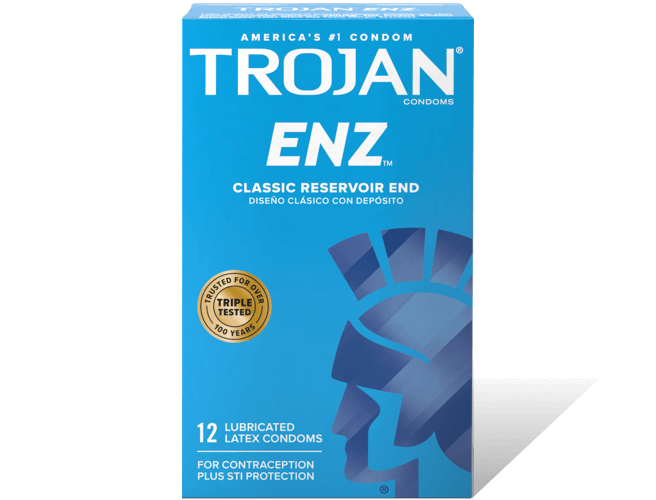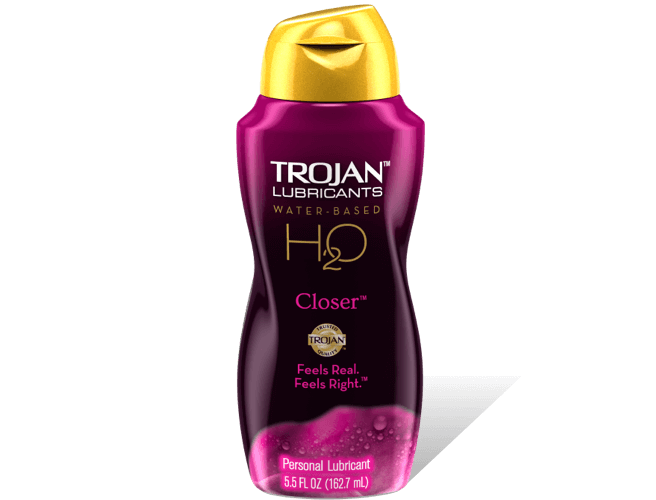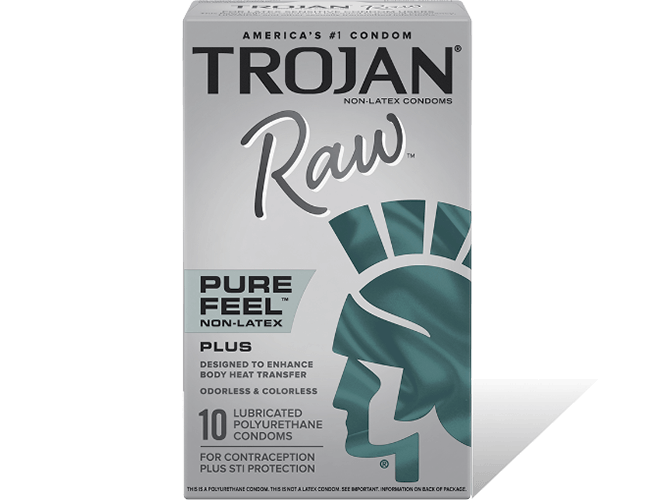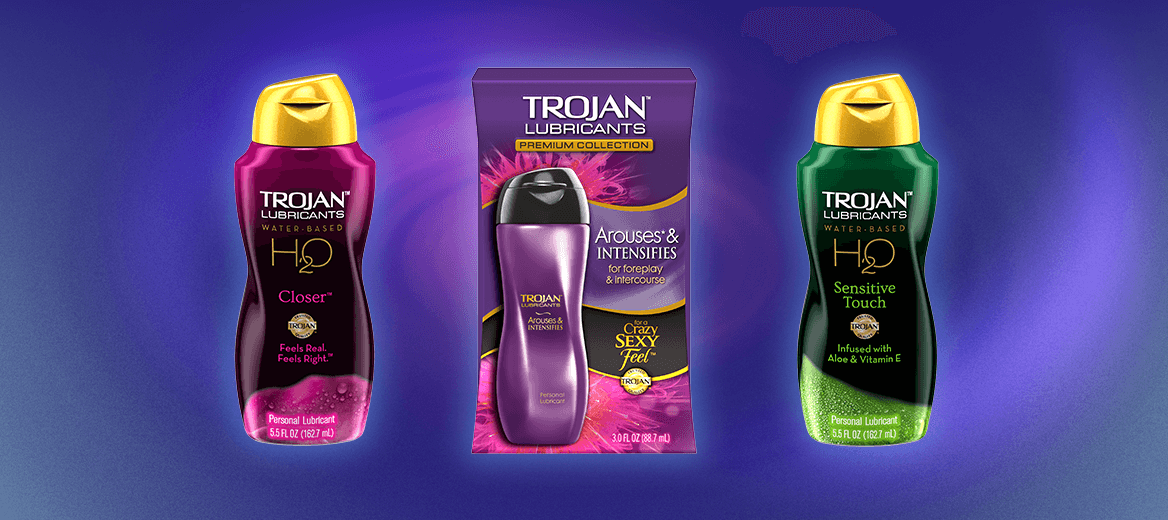Health + Wellness
Yeast Infections and Sex plus Condoms, Lubes, Vibrators

Sometimes your vagina or penis itches or burns and it's not a Sexually Transmitted Infection (STI), it’s a yeast infection. But that doesn’t mean you should grab the condoms, lube or vibrator and hop back into bed right away.
Before we answer the uh, burning question of whether you can have sex with a yeast infection, there are some things you should know about causes, risks, symptoms, and treatment.
What is a Yeast Infection?
A yeast infection is an imbalance of the bacteria and fungus that naturally live in the vagina. In a healthy vagina, lactobacillus bacteria keep the fungus candida under control. When something disrupts the balance (more on that below), candida can overgrow into a yeast infection.
A yeast infection is not a sexually transmitted infection, but being sexually active can increase your risk for getting one. About 75% of people with vaginas will have at least one yeast infection in their lifetime and it can happen to people with penises as well.
What Causes Yeast Infections?
Most vaginal yeast infections are caused by the fungus candida albicans, but another type of candida may be responsible. You can get a yeast infection due to hormones (some people get yeast infections right before their period), taking antibiotics, or even stress.
You may be at increased risk of getting a vaginal yeast infection if:
You are pregnant.
You have diabetes.
You have recently taken an antibiotic.
You use birth control or hormone replacement that increases your estrogen levels.
You have a compromised immune system from steroids, HIV, cancer treatment, etc.
You swim or workout frequently and do not remove your wet clothes quickly.
You have recently had your menstrual period.
You drink alcohol or consume fermented food or drinks frequently.
You use scented feminine products or douche frequently.
What are Yeast Infection Signs and Symptoms?
The most common symptom of a vaginal yeast infection is internal and external itching. Other symptoms include swelling on the vulva/ near the vagina, pain or burning when you pee, pain during sex, soreness or redness in the genital area, and discharge that is thick, clumpy, and white – often compared to cottage cheese.
Vaginal Yeast Infection Treatments
The good news is that most yeast infections are fairly easy to treat with antifungal medication. Your health care provider may write you a prescription for a one-dose oral medication that usually clears up a yeast infection in a day or two. Or you can use over-the-counter antifungal creams or vaginal suppositories which also help reduce symptoms within a few days.
If this is the first time you’re having vaginal discharge or you have more frequent or intense yeast infection symptoms, it’s a good idea to visit your health care provider. They can do an exam to make sure there isn’t another type of infection and prescribe additional or stronger treatments for persistent infections.
Can men get yeast infections?
While women and people with vaginas get yeast infections more often, men and people with penises can get yeast infections, too. Most often this is a result of sex with a partner who has a vaginal yeast infection, but an oral yeast infection, called thrush, can also sometimes spread from the mouth to genitals and vice versa. Yeast infections in men can lead to a condition called balanitis, an inflammation of the head of the penis that can also cause itching and burning.
Men and people with penises may need to see their health provider to treat a yeast infection. If your partner keeps getting a vaginal yeast infection, it’s a good idea for you to get tested to see if you are transferring it back and forth, even if you don’t have any obvious symptoms.
Can you have sex with a yeast infection?
Here’s the big question. No one wants a yeast infection to cramp their style, but, there are several reasons why it’s probably better to wait for your treatment to be over and your yeast infection symptoms to be gone before you have sex.
Reasons to Think Twice Before Having Sex with a Yeast Infection?
It might be something else. The symptoms of a yeast infection are so similar to some other STIs that you may be misdiagnosed (especially if you diagnosed yourself) or the yeast infection is masking symptoms of a different infection. Making sure the anti-fungal medication works before having sex can prevent the possibility of transmitting another infection.
It is likely to hurt. Pain during sex is a symptom of yeast infections. Yeast infections can make the skin on and near your genitals swollen and irritated. Touching that skin—even in ways that normally feel great—may make this worse. Penis-in-vagina sex can be especially uncomfortable because of the friction penetration naturally causes.
It could take longer to heal. Touching or rubbing already irritated skin may increase inflammation and penetration—whether it’s with a finger, a penis, or a sex toy—can introduce new bacteria into the vagina. Also, if you are using a cream-based medicine to fight a yeast infection, penis-in-vagina sex can push the medication out.
It could pass to your partner. As we said earlier, yeast infections are not STIs but depending on anatomy, they can be passed between partners. If both partners have vulvas/vaginas, there is a possibility of passing yeast infections back and forth though the research isn’t clear on how often this happens. We do know from research that there’s about a 15% chance that a person with a vaginal yeast infection will pass it to their partner with a penis. And, if you have sex again before both partners are treated, you can keep passing it back and forth.
It could increase your risk for STIs. The skin around your genitals is more sensitive than other skin and even more sensitive when it’s irritated or inflamed by a yeast infection. The friction of sex or your own scratching can cause tiny tears in the vagina which can make you more susceptible to STIs. It is also important to note that antifungal creams and suppositories are oil-based which means they can break down condoms.
Having sex with a yeast infection is likely to be unpleasant at best and may risk extending your discomfort. Most health care providers will tell you to take at least a few days off while the medication does its job. Like all sexual decisions, however, whether to have sex with a yeast infection is up to you and your partner.
Condoms, Lubes, Sex Toys and Yeast Infections
We hate to say it but there is a complicated relationship between yeast infections and condoms, lube, and sex toys. All of these things that make your sex life spicy when you’re feeling good actually have the potential to trigger a yeast infection. And yet, some of them may also help keep yeast away. We told you it was complicated. Here’s what you need to know.
Can Condoms Prevent or Cause Yeast Infections?
It's tricky. Condoms put a barrier between your partner’s genitals--and any bacteria in/on them--and your own. For some people, though, condoms may make sex more irritating.
This is likely because they’re not using enough lube and are experiencing friction. It may help to choose a condom with high quality lube already on it, add more lube (but see below for types of lube to avoid), or switch to a condom that’s not made of latex. Very few people are actually allergic to latex but some people do find they are sensitive to it.
What about Lube and Yeast Infections?
The relationship between lubes and yeast infections is also tricky. Lubes may help prevent yeast infections or they may trigger one.
On the one hand, the friction of penetration can lead to a yeast infection, which means that using extra lube during sex may help ward off irritation and itching later.
At the same time, most yeast infections involve an imbalance of the bacteria that are normally in the genitals and lube can be one of those things that throw bacteria out of whack. Some lubes are more likely to be irritating than others. Flavored lubes or ones containing glycerin have sugar, which can trigger an overabundance of yeast. If you think your lube might be the issue, try switching it out.
And though it might seem like it would be soothing, it’s not a good idea to put lube on or in your vagina or penis if you think you have a yeast infection as yeast likes really wet places.
Can a Vibrator Give You a Yeast Infection?
A sex toy can give you a yeast infection if it introduces new bacteria into the area.
The best way to avoid this is to clean your reusable sex toys carefully after each use. Soap and water should do, but you can also get sex toy cleaners if you want to be fancy. And, if you're not done with playtime, make sure to clean your toys before switching penetration places (the anus to the vagina, in particular) or between partners.
It’s probably a good idea to hold off on using dildos or internal vibrators while you have a yeast infection; just like penises or fingers, they can push bacteria into the vagina.
Can You Get a Yeast Infection from Oral Sex?
Yes, you can get a yeast infection from receiving oral sex and it’s also possible to get a yeast infection of the mouth, called thrush, from giving oral sex.
Yeast thrives in warm and moist environments, and mouths, vaginas, anuses, and even the heads of penises fit this description. It is possible to get a yeast infection in any of these places. This could be the result of giving oral sex or analingus (rimming) to a partner with a yeast infection or getting oral sex from a parter with a yeast infection of the mouth. But yeast infections are not considered highly contagious and any type of sex (and lots of other things) can bring them on – so there’s no way to know if you got it from a partner.
Still, avoiding the cycle of giving yeast infections back and forth between partners is one of the reasons it may be best to wait for the end of treatment before hopping back into sex. Antifungal pills, mouthwashes, and creams work to treat yeast infections wherever they may occur. Talk to your healthcare provider about the best treatment for you.
Can You Have a UTI and a Yeast Infection at the Same Time?
The double whammy of having a UTI and a yeast infection at the same time is actually quite common. In fact, the very antibiotics that can cure a UTI can cause a yeast infection.
If you’re prone to yeast infections and getting a prescription for antibiotics (for a UTI or anything else) talk to your health care provider about ways to prevent a yeast infection. Some providers will write a prescription for antifungal medication in advance, just in case.






